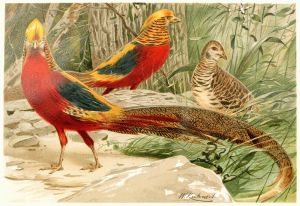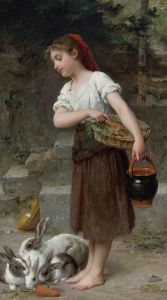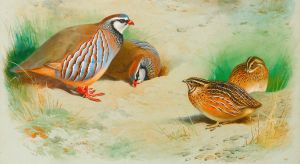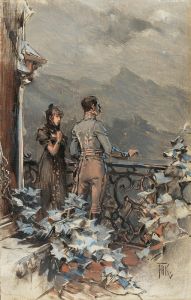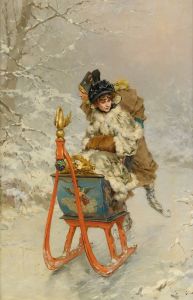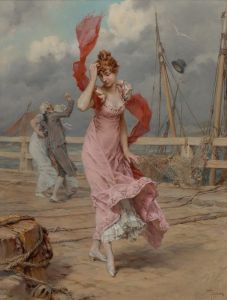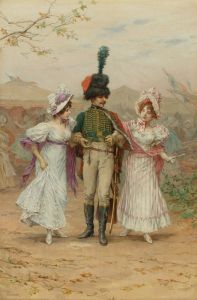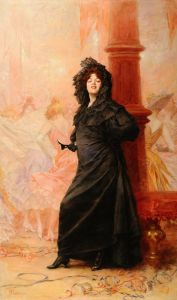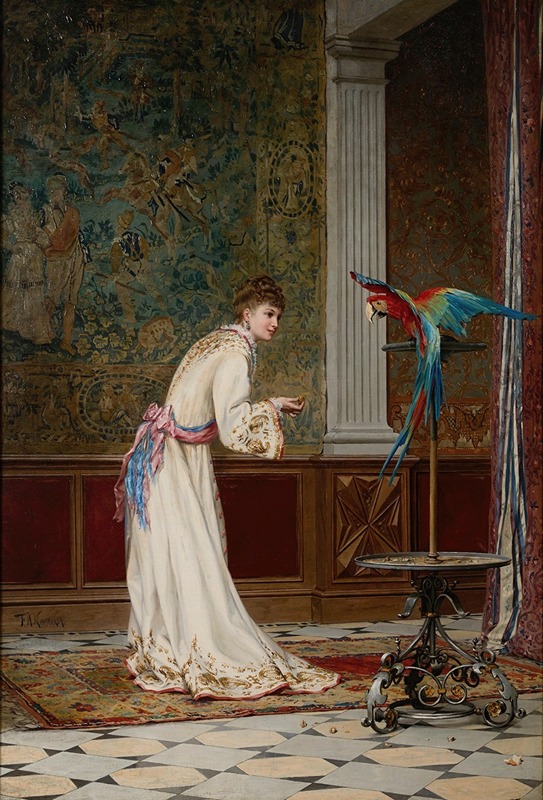
Feeding the macaw
A hand-painted replica of Frederik Hendrik Kaemmerer’s masterpiece Feeding the macaw, meticulously crafted by professional artists to capture the true essence of the original. Each piece is created with museum-quality canvas and rare mineral pigments, carefully painted by experienced artists with delicate brushstrokes and rich, layered colors to perfectly recreate the texture of the original artwork. Unlike machine-printed reproductions, this hand-painted version brings the painting to life, infused with the artist’s emotions and skill in every stroke. Whether for personal collection or home decoration, it instantly elevates the artistic atmosphere of any space.
Frederik Hendrik Kaemmerer (1839–1902) was a Dutch painter associated with the Academic art movement. He was known for his refined and detailed works, often depicting scenes of 18th-century French aristocracy, as well as genre paintings and portraits. Kaemmerer studied at the École des Beaux-Arts in Paris under Jean-Léon Gérôme, a prominent Academic painter, and spent much of his career in France. His works were well-received during his lifetime, and he exhibited regularly at the Paris Salon, where he earned recognition and awards.
One of Kaemmerer’s notable works is Feeding the Macaw. This painting exemplifies his skill in capturing delicate details and his interest in portraying scenes of leisure and elegance. The artwork depicts a young woman feeding a macaw, a large and colorful parrot, in a serene and refined setting. The composition reflects Kaemmerer’s characteristic attention to texture, light, and color, as well as his ability to convey a sense of intimacy and charm.
The painting is rendered in a style that aligns with the Academic tradition, emphasizing technical precision and polished execution. The subject matter, featuring a moment of interaction between the woman and the bird, suggests a focus on domestic tranquility and the beauty of everyday life. The macaw, with its vibrant plumage, serves as a focal point in the composition, contrasting with the softer tones of the woman’s attire and the surrounding environment.
Kaemmerer’s works, including Feeding the Macaw, often reflect the influence of 18th-century French Rococo art, which celebrated themes of elegance, leisure, and aristocratic life. This influence is evident in the painting’s graceful composition and the artist’s choice of subject matter. While Kaemmerer’s oeuvre includes a variety of themes, his depictions of women in refined settings remain among his most admired works.
Today, Kaemmerer’s paintings are held in private collections and museums, though specific details about the current location of Feeding the Macaw are not widely documented. His contributions to 19th-century art continue to be appreciated for their technical mastery and aesthetic appeal.





